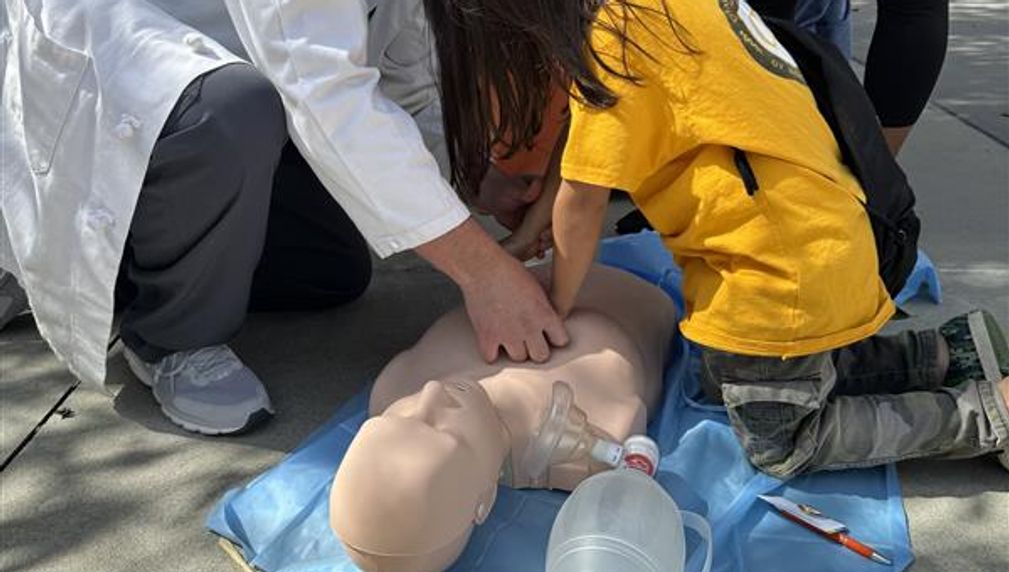Engaging the Next Generation of STEMM Professionals
The proposed program will expose Foster youth from the Living Advantage Program to hands-on Science Technology Engineering Mathematics and Medicine (STEMM) programs. Students in the program will engage in scientific experiments, participate in workshops that will ignite their interest in pursuing STEMM careers.

What is the primary issue area that your application will impact?
Support for foster and systems-impacted youth
In what stage of innovation is this project, program, or initiative?
Expand existing project, program, or initiative (expanding and continuing ongoing, successful work)
What is your understanding of the issue that you are seeking to address?
There is lack of diversity in healthcare careers. Students in SPA 6 cope with poverty’s daily stressors (15-20% live below the poverty line) as well as lack of well-qualified STEMM teachers and less individualized attention. These factors hinder STEMM learning: 84% and 90% of SPA 6 11th-graders did not meet/nearly met standards for the CAASPP in math and California Science Test (CAST), respectively. One of our program participant writes, “For students, it’s not a dislike for science, it’s not understanding it.” Moreover, students with ambitions in STEMM too often lack educational/career roadmaps. Our focus is to engage foster care youth to see themselves as future healthcare professionals. Often, foster care youth do not value themselves and believe in themselves. This program will expose students to people who look like them to spark a sense of confidence and belonging which will encourage them to see themselves as future healthcare professionals.
Describe the project, program, or initiative this grant will support to address the issue.
Based in an historically Black community, the program sends the message that health equity is nigh and low-income youth can easily access an “elite” program. CDU continues to "shape and prepare community youth to become STEMM professionals by increasing access to STEMM education programs and resources, by providing unique academic programs aimed at strengthening the academic abilities and expanding the educational horizons of underrepresented foster youth of color. The goal for the Program is to engage foster youth 6th-12th grade students residing in the South Los Angeles communities.
Students will engage in monthly workshops and events geared at cultivating an interest for them to pursue careers in the STEMM fields. Students will be a part of the STEMM Literacy workbook development. This will spark curiosity and learning as students become a part of curriculum development under the supervision of the Program Team. Using Artificial Intelligence (AI) techniques, students will be given the chance to become creative. These skills will be instrumental as students pursue careers in STEMM fields.
Foster youth do not get the opportunity to explore organizations related to STEMM education and learning. As part of the program, students will participate in field trips aligned with the content they are given during the workshops.
As the saying goes " You become what you see"; students will participate in a Career day where they will meet and interact with STEMM professionals of color.
Describe how Los Angeles County will be different if your work is successful.
The program will improve Los Angeles County by increasing the number of foster youth who graduate from high school and pursue careers to avoid being homeless. This will help decrease the homelessness issue faced by Los Angeles County. Foster youth in the program will receive the support, mentorship and guidance needed to encourage foster youth to graduate high school and pursue a college degree. The program will increase the number of foster youth who gain the confidence, and excitement in pursuing careers in STEMM fields. According to the Northwood Howler, "One in five foster youth will enter the homeless population and one in four will become involved with the criminal justice system within just two years after foster care. After years of trauma of being passed from place to place with as much instability as the original home of abuse, 21 percent of former foster youth develop Post-Traumatic Stress Disorder, as opposed to a mere 4 percent of the general adult population".
What evidence do you have that this project, program, or initiative is or will be successful, and how will you define and measure success?
CDU currently has the Saturday Science Academy II Program (SSA II) which has been in existence since 1981. The program has provided academic learning, mentorship, hands-on experiential learning and other experiences including meeting STEMM professionals of color to students in the South Los Angeles area. The impact of the program has been measured by the number of students who have graduated high school and pursued careers in STEMM areas. One of our students started the program when he was in 2nd grade and is currently a Resident in Anesthesiology at Harbor UCLA. This alumni of the program attests his interest in medicine to seeing a Black Male Physician who looked like him during his participation as a 2nd grader in the Program. In addition, after every session, we collect survey data to see how the program impacted students goal of graduating high school and pursing a college degree and continuing to pursue a degree in STEMM.
Describe the role of collaborating organizations on this project.
Our collaborating partner Living Advantage Inc will collaborate with recruiting foster youth to participate in the Program.
Approximately how many people will be impacted by this project, program, or initiative?
Direct Impact: 200.0
Indirect Impact: 400.0